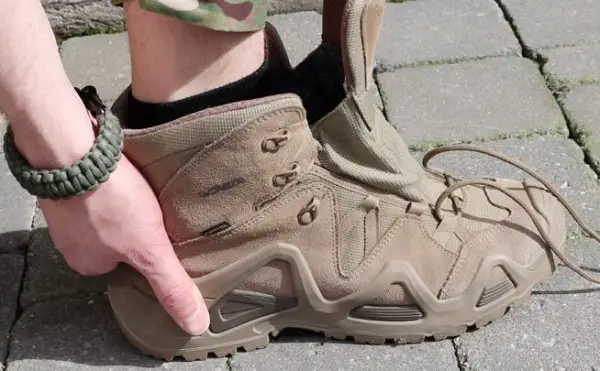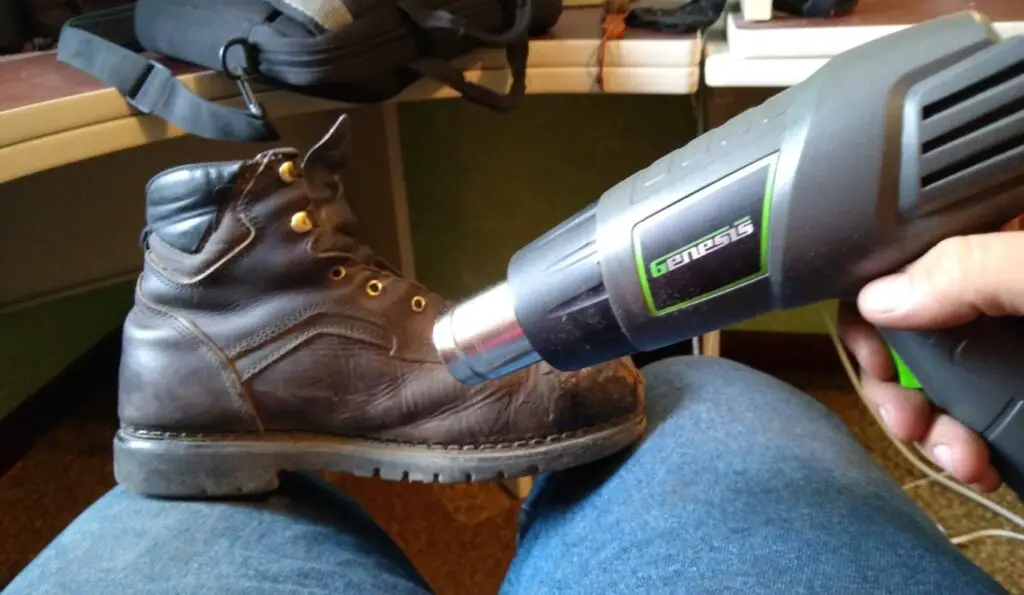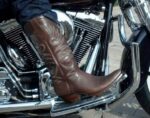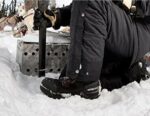Due to the purpose for which hiking boots are used, it is made sure that the boots are durable, protective, and safe for the users.
They are designed in a way that makes you feel comfortable whether it is just for an evening stroll or a long stride. Hence, hiking boots can easily be used as work gear for ensuring a safe and comfortable atmosphere at your workplace.
However, any kind of mismatch in size in any part of your shoes can easily get you annoyed because of the discomfort it can cause.
Hence, being aware of various methods you can use to adapt and adjust to certain deformities will always give you an upper edge. One such mismatch of the size that can create not just discomfort but also pain in your legs is the toe-box.

If that part of your boot remains clinging to your toes tightly, there are chances of your toe getting swelled and further pave way for other serious problems such as blisters, bruises, and so forth.
This article will guide you by suggesting some very innovative ways through which you can stretch the toe-box of your hiking boots and use them for a longer time without any problems.
When Should I Stretch The Toe-Box Of My Hiking Boots?
Ideally, you must have a one-finger gap between your toes and the toe box of your shoes. It should not touch the tip of your fingers at any cost.
If it is clinging to your fingers and is causing pain to your toe or fingers while walking, then it is time for you to stretch your hike boots to get rid of the pain as well as increase the durability of your shoes.
You can always check if there is enough space by circling your fingers inside the boot or walking around for some time to observe if there is any discomfort being created.
Which Material of Hiking Boots Can be Stretched Easily?
Hiking boots are often available in two materials: synthetic and leather. Before choosing a method to stretch your boots you should look into which one is more suitable for the material of your shoes as not all materials might be effective to the methods and chemicals in a similar manner.
The impact can starkly differ. Leather is easier to be stretched than other synthetic materials. While you can use the methods across both materials, you might not see as much impact on synthetic material as much as in leather boots.
5 Methods to Stretch Toe Area of Hiking Boots
1.) Heating Method
Remove the insoles of your shoes and heat the shoes in a microwave oven at 120 degrees for 10 minutes. After removing them, apply mink oil for leather conditioning.
Wear the shoes immediately and walk around for some time with enough movements with your toes and fingers inside the shoes.

Try to continue this at least for an hour. Doing this during work time can save time as you might not have to separately allocate time for this activity.
Apply mink-oil again. Walking wearing these shoes for a week or so will help you understand the difference. Wearing shoes and blow drying over them for some time is also one option that can be used for stretching the toe-box.
Make sure that you reiterate the heat more on the required area and is in a moderate amount.
2.) Using Socks
One of the easiest ways of stretching your shoes without using any external tool or force is by making use of socks. There are multiple ways in which you can use them to stretch your shoes.
The most common way is to wear thick pens, or multiple thin ones (if plausible) and walk around as much as possible. Though it might take some time, the results are effective and do not come with any side effects.
The blow-drying method mentioned in the previous section can also be done by stuffing thick socks inside so that the boots take the allocated shape. Leaving rolled socks stuffed inside the shoes overnight is also a preferred choice by people.
3.) Stretching Tools
Having a shoe stretcher is a good investment as it can be used for many kinds of footwear. You can use it to stretch the toe-box of your hiking boots too.
The tool is designed in a way that will help you focus and stretch the area that is predominantly causing trouble. Shoe-tree is also one tool that has proven to be very effective.
There are also shoe stretching sprays available online and in other markets that will help you with the expansion of your boots, especially if they are made of leather. You can also find shoe stretchers that are specially designed for hiking boots.
4.) Retaining Silica Gel
If you are wearing hiking boots for hiking or work, there are chances that you might often expose your feet to water and mud because of which your shoes might get a little tight.
The silica gel that is often placed inside the shoes must be kept intact as it absorbs all the moisture and keeps the shoes proper and in shape for a long time. Packs of silica gel thus can be an effective rescue method.
5.) Seeking Help From Professional
All the methods mentioned above are feasible and most convenient as they can be done at home and do not mandate you to use multiple resources.
However, sometimes when the gap that needs to be expanded is huge, these home remedies might not necessarily work. During such cases, seeking help from professionals such as cobblers can be one of the safest options.
Letting them know which part needs to be expanded and how much gap needs to be created is half work done. The next part is done by the cobbler, and he can create wonders to make your shoe all comfortable again.
Conclusion
Chances of getting the wrong size or your boots contracting as an impact of the weather or surroundings are something that can happen very often to many people.
However, what one needs to understand before thinking about discarding the boots is trying to rectify and create the necessary gap so that you can use your same favorite boots to work and also be comfortable while using them.
The methods mentioned above, thus, can be a great blessing if followed properly!






